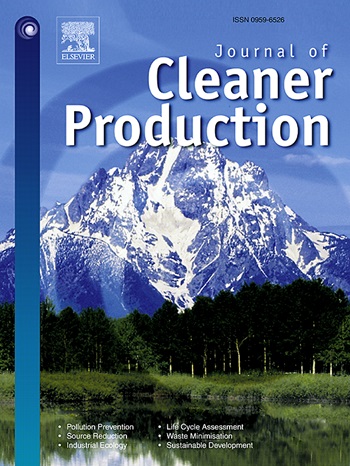水热预处理与酶解相结合的城市食物垃圾液体馏分产琥珀酸优化研究
IF 10
1区 环境科学与生态学
Q1 ENGINEERING, ENVIRONMENTAL
引用次数: 0
摘要
食物垃圾(LFFW)的机械提取液体部分含有高碳水化合物,使其成为生物基琥珀酸(SA)生产的有前途的底物。本研究旨在通过创建多步骤LFFW定价策略,最大限度地提高从城市家庭和餐馆食物垃圾中生产SA的效率。因此,建立了一种综合水热预处理(酸或碱)和酶解LFFW的参数优化方案。采用4%硫酸在180°C下水解0.5 h,淀粉酶、纤维素酶和纤维素二糖酶解的单糖浓度最高,为66.2 g L−1。然而,由于直接酶解LFFW(单糖浓度为56.9 g L−1),它可以立即用于SA生产,而不需要由于抑制剂(即糠醛,甲酸和乙酸)而进行额外的下游工艺。随后,以LFFW水解产物为原料,对琥珀酸放线杆菌130Z、琥珀酸Basfia产酸菌和琥珀酸放线杆菌CICC11014的SA产率进行比较,结果表明,a . succinogenes 130Z的SA产率最高,为0.43 g SA g−1葡萄糖。最后,通过添加营养物质(酵母浸膏、NaHCO3、Na2HPO4·2H2O和K2HPO4·3H2O)进一步优化工艺,与不添加营养物质的LFFW发酵相比,SA的产率提高了54%。这些新颖的多步骤LFFW利用策略为未来食物垃圾处理设施中SA的生产提供了关键见解。本文章由计算机程序翻译,如有差异,请以英文原文为准。


Integrated hydrothermal pretreatment and enzymatic hydrolysis for optimal succinic acid production from the liquid fraction of municipal food waste
The mechanically extracted liquid fraction of food waste (LFFW) contains high carbohydrates levels making it a promising substrate for biobased succinic acid (SA) production. This study aimed to maximize the efficiency of SA production from municipal household and restaurant food waste, by creating a multistep LFFW valorisation strategy. Thus, a parameter-optimized protocol for integrated hydrothermal pretreatment (acid or alkali) together with enzymatic hydrolysis of the LFFW was created. The highest monosaccharides concentration of 66.2 g L−1 was achieved using 4 % sulfuric acid at 180 °C for 0.5 h, combined with enzymatic hydrolysis with amylase, cellulase, and cellobiose. However, due to direct enzymatic hydrolysis of the LFFW (monosaccharides concentration of 56.9 g L−1), it could immediately be used for SA production without requiring additional downstreaming processes due to inhibitors (i.e., furfural, formic acid, and acetic acid). Subsequently, the comparison of SA production efficiency of Actinobacillus succinogenes 130Z, Basfia succiniciproducens, and Actinobacillus succinogenes CICC11014, using the LFFW hydrolysate as feedstock, showed that A. succinogenes 130z, had the higher SA production efficiency with a yield of 0.43 g SA g−1 glucose. Finally, a further process optimization was realized by nutrients addition (i.e. yeast extract, NaHCO3, Na2HPO4·2H2O, and K2HPO4·3H2O), achieving a 54 % higher SA production yield compared to the LFFW fermentation without nutrients addition. These novel multistep strategy of LFFW utilization, provides key insights for future SA production in food waste treatment facilities.
求助全文
通过发布文献求助,成功后即可免费获取论文全文。
去求助
来源期刊

Journal of Cleaner Production
环境科学-工程:环境
CiteScore
20.40
自引率
9.00%
发文量
4720
审稿时长
111 days
期刊介绍:
The Journal of Cleaner Production is an international, transdisciplinary journal that addresses and discusses theoretical and practical Cleaner Production, Environmental, and Sustainability issues. It aims to help societies become more sustainable by focusing on the concept of 'Cleaner Production', which aims at preventing waste production and increasing efficiencies in energy, water, resources, and human capital use. The journal serves as a platform for corporations, governments, education institutions, regions, and societies to engage in discussions and research related to Cleaner Production, environmental, and sustainability practices.
 求助内容:
求助内容: 应助结果提醒方式:
应助结果提醒方式:


